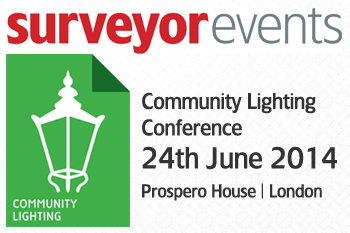As local authorities across the UK continue to face hard spending decisions in the wake of austerity measures, Armin Mayer, marketing manager from GE Lighting discusses the challenges and benefits of financing large-scale street lighting upgrades.
For many local authorities, the twin pressures of curbing expenditure and meeting stringent energy efficiency targets have trapped them in a seemingly impossible position. With stree lighting accounting for 30% of the average local authority’s energy bill, inefficient lighting is a serious drain on resources – in some drastic cases this has even led to blackouts, with local authorities forced to make the difficult decision to switch lighting off.
Yet, the reality is that managing energy efficiency and reducing costs are in fact two sides of the same coin. Despite the initial investment, the savings from upgrading outdoor lighting can be as much as 50 to 80%, which means the payback period is relatively short – with significantly lower carbon emissions and on-going energy costs as a result.
Street lighting is the low hanging fruit when it comes to urban energy efficiency, but the ‘great switch-off’ is an unfortunate sign that many local authorities are still unaware of the ways they can access modern lighting infrastructure. Research is underway to determine the extent to which shutting off streetlights increases the risk of crime and accidents and while there is some debate about the topic, one thing is certain: the switch off is a step backwards. What’s more, there is no immediate guarantee that turning areas dark will not eventually put citizens at risk.

"Turning off streetlights is an emotive issue and one that has divided opinion – some commentators welcome it as a relief from the glare of unwanted light through bedroom windows, yet developments in outdoor lighting technology have negated this issue in modern luminaires. Delivering a highly directed output rather than the diffused glow of traditional halogen bulbs, illumination from LED streetlights can be focused downwards to specific locations, thus minimizing light pollution into surrounding areas. Much closer to daylight, the white light emitted by LEDs also offers further advantages in that pedestrians feel more secure in their environment and car driver reaction time (mescopic vision) is at least six times quicker."
Faced with these public safety concerns and burdened by the heavy financial toll of existing streetlights (the UK spends £300m each year on energy for street lighting, a figure that is only set to increase in line with rising fuel costs) it’s little surprise that local authorities are eager for an alternative. Switching to energy efficient lighting is a robust solution that saves money, energy and carbon, both immediately and throughout the luminaires’ long lifetime. In fact, across the UK as a whole this would save £220m each year in energy costs, while the reduction in CO2 emissions would be equivalent to taking 330,000 cars off the road.
Yet the significant capital outlay required to upgrade outdoor lighting stock has placed such investment out of reach for many councils – particularly in the current climate of close budget scrutiny. Despite this, solutions to these financing problems are starting to appear on the market and there are now a number of funding options available to local authorities that essentially enable upgrades to pay for themselves.
For example, the UK Green Investment Bank (GIB) has recently launched a new loan that is exclusively available to local authorities looking to make the switch to low energy streetlights. The new product from GIB provides a low, fi xed rate loan that ensures repayments are made from within savings. Although the loan is available over a maximum repayment period of up to 20 years, the payback can be as short as fi ve years and can even include a development loan to help local authorities with the costs of progressing their plans.
Lessons can be learned from the example seen in Turkey, where the approach to outdoor lighting has been anything but shorttermist. The Turkish Government has embarked on a pioneering programme to change all of its 6.5 million outdoor luminaires to LED. With 2% of the country’s energy currently consumed by outdoor lighting, the Turkish Government has recognised the long-term gain of the investment, which totals $1 billion over five to 10 years. With the scheme projected to achieve a 40% saving on the current 4 billion KW annual energy use, the payback is considerable. More signifi cantly, although the programme will be privately fi nanced at fi rst, the savings will enable the project to be self-funding in around three years – an excellent demonstration of long-term thinking.
Ultimately, lighting is a strategic public asset that costs money and uses energy. Fortunately, there are a number of ways public authorities in the UK and beyond can obtain and maintain that strategic asset in a clever and cost effective way that ensures effective and reliable lighting is available where and when it is needed.
Surveyor and the ILP’s 18th Annual Surveyor Lighting Conference and Exhibition on 24 June 2014 at Prospero House in London, is extending its focus - How can we make community lighting more efficient and effective and what is the latest technology councils should be implementing?